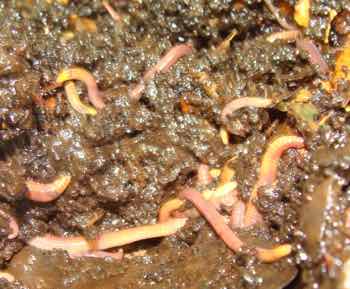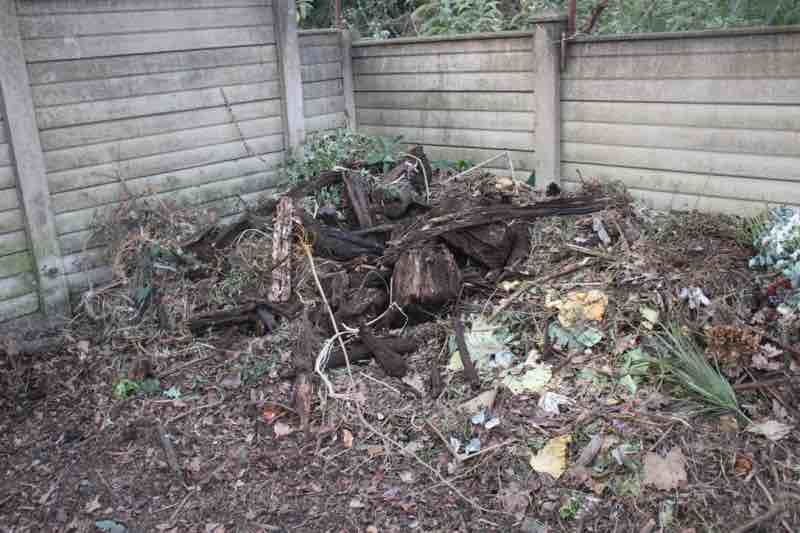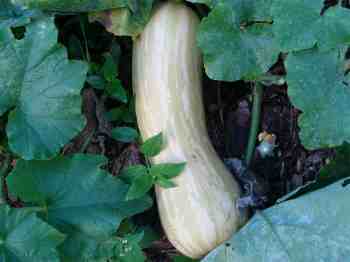- Bernard Preston homepage
- Our green garden
- Compost Heaps in Late Winter
Compost heaps in late winter
Compost heaps in late winter are more easily worked in the dry weather.
There is a definite decision to be made in gardening. Either you bend your back and build compost-heaps or you send all that friable material to the dump; and buy inorganic fertiliser.
There is a real cost to be counted; it is not about dollars, rands and cents but the sweat off your brow that will drip into and enrich the soil.
And perhaps the cost of consulting your doctor or DC; it is hard work.

Let's start there. Before you begin working the compost heap, approach it in the same way that a sportsman would prepare for a match. Limber and warm up, with plenty of stretching; or it may prove to be a costly and painful exercise.
Focus particularly on the shoulders and the lower back but in fact it is plain good exercise for the whole body. It really does beat the gym in my book. But when that little voice says stop, then obey.
Today I managed seven large barrow-loads when the warning came; so I stopped and went in search of my camera. It amounted to about an hour’s solid exercise for heart and lungs; muscles and joints too. Just as important for me there was something to show for all my hard work.
Mostly Helen and I are very glad not to have a gardener but today I've been wondering whether we are totally crazy. The real cost of home-grown organic food is the sweat off your brow; moving the humus from the compost heaps in late winter is not for sissies, especially those in their eighth decade.
Instead we have started building raised garden beds; in reality they are just permanent compost heaps that do not have to be opened annually.
Late winter means that your compost heaps are bulging with all the summer prunings; those dry mealie stalks, dead climbing bean plants and autumn leaves. And a whole lot more from the kitchen scraps, of course.
Beneath the dry material lies the black gold that you are after. You need to dig it out and get it into the garden-beds before the spring rains arrive, making it impossibly heavy.
We put all the vermi-compost from our worm farms into the heaps. It's alive with wrigglies and their eggs that hatch and move into the pile, continuing their work of producing humus; the stuff that makes your plants take off.

I used to think that humus and compost were synonymous, one and the same thing; not so.
Humus is that part that is resistant to the action of the microorganisms that are eagerly turning your organic cuttings and trimmings into minerals, nitrogen and other material.
What remains after the work of the bugs is humus, forming a permanent structure of the soil; it makes the earth soft and crumbly.

This is the rough material that was left; it had to be removed from the top of the pile to reveal the black gold beneath. Several barrow-loads of vermicompost have already been added; it is living material and the worms will spread through the heap.
Soon we will plant butternut seeds in spring after the first rains.
In particular it naturally contains a chemical called humic acid that facilitates the absorption of water, minerals and other nutrients from the soil; it greatly increases the yields without the addition of inorganic fertiliser.
In late winter this black gold was covered with layers of organic plant material that you have been adding that has only partially undergone this process known as humification[1].
Google the term humification; it is interesting. Soon we hope the spring rains will arrive and we will be tossing butternut seeds onto the compost heaps; thereafter you cannot touch them for nine months.
So now before the rains, the compost is dry, light and relatively easy to work; it looks like dark, beautiful earth. Having first limbered up, use a garden-fork to move those top layers of partially decayed plants to an area adjacent to your heap, revealing below the mature humus that you are seeking; that is the stuff that will make your plants take off.
Interestingly, you will find very few earthworms; they have done their business and moved on to fresh material. They particularly like old logs incidentally; retain them.
Compost heaps in late winter
Compost heaps in late winter should be processed before being planted in spring with butternut and pumpkins. The addition of vermicompost from the wormery gives the pile the zest it needs for the new season.

Using a shovel dig this humus out and spread it over your garden in preparation for spring. If you have a relatively small amount, concentrate it where you are planting seedlings.
Now you can toss your butternut and pumpkin seeds onto the compost heap. In six-months time you will have a harvest of food that will keep you in soup right through next winter.
Added to that researchers have found that city-dwellers are 40 percent more likely to suffer from mood disorders; and twice the risk of developing schizophrenia. Is it time to cuddle up to a compost heap?
A group of top scientists gave us these gems at a weight loss conference recently; harvesting the humus from compost heaps in late winter would certainly win their approval. It's excellent exercise for lowering high blood glucose.
When browsing use right click and "Open Link in New Tab" or you may get a bad gateway signal.
Newsletter
Our newsletter is entitled "create a cyan zone" at your home, preserving both yourself and Mother Earth for future generations; and the family too, of course. We promise not to spam you with daily emails promoting various products. You may get an occasional nudge to buy one of my books.
Here are the back issues.
- Lifestyle and ideal body weight
- What are ultra-processed foods?
- Investing in long-term health
- Diseases from plastic exposure
- Intensive lifestyle management for obesity has limited value
- A world largely devoid of Parkinson's Disease
- The impact of friendly bacteria in the tum on the prevention of cancer
- There's a hole in the bucket
- Everyone is talking about weight loss drugs
- Pull the sweet tooth
- If you suffer from heartburn plant a susu
- Refined maize meal and stunting
- Should agriculture and industry get priority for water and electricity?
- Nature is calling
- Mill your own flour
- Bake your own sourdough bread
- Microplastics from our water
- Alternative types of water storage
- Wear your clothes out
- Comfort foods
- Create a bee-friendly environment
- Go to bed slightly hungry
- Keep bees
- Blue zone folk are religious
- Reduce plastic waste
- Family is important
- What can go in compost?
- Grow broad beans for longevity
- Harvest and store sunshine
- Blue zone exercise
- Harvest and store your rainwater
- Create a cyan zone at your home
Did you find this page interesting? How about forwarding it to a friendly book or food junkie? Better still, a social media tick would help.
- Bernard Preston homepage
- Our green garden
- Compost Heaps in Late Winter
Address:
56 Groenekloof Rd,
Hilton, KZN
South Africa
Website:
https://www.bernard-preston.com